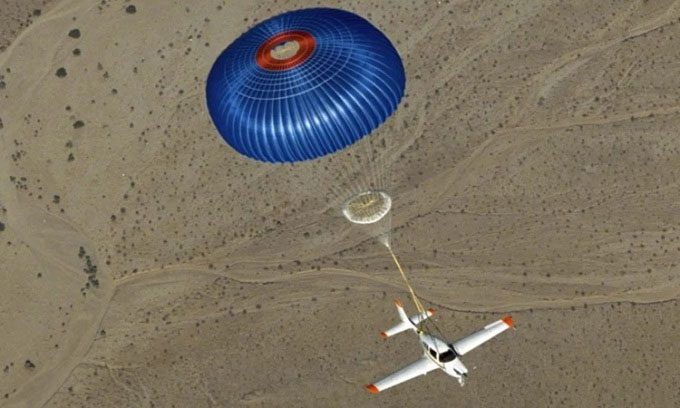Since its introduction, the Cirrus Airframe Parachute System has saved 249 lives on aircraft experiencing engine troubles or unexpected incidents.
The Cirrus Airframe Parachute System (CAPS) from the American company Cirrus Aircraft has significantly transformed the operation of small aircraft, according to Simple Flying. The idea of using parachutes for entire aircraft has existed since the early days of aviation, with various design efforts made, yet no product had proven its practicality or effectiveness until now.

The Cirrus Airframe Parachute System allows aircraft to descend in a controlled position and land safely. (Photo: Smithsonian Magazine).
In March 2023, during a severe accident, CAPS saved the lives of six people onboard a Cirrus SR22, including a 3-year-old child and an infant. Shortly after taking off from Pampulha Airport in Brazil, the aircraft experienced engine failure. Realizing that the glide distance was insufficient to return to the airport, the pilot decided to deploy CAPS. As a result, the SR22 descended with the parachute deployed and landed safely without any injuries to the passengers.
Previously, in 1982, Ballistic Recovery Systems (BRS) made a breakthrough by beginning the production of parachutes for ultralight aircraft. According to Cirrus Aircraft, a significant milestone occurred in 1993 when BRS developed a dedicated parachute system for Cessna 150/152 aircraft. However, this expanded system was expensive, heavy, and took up considerable luggage space. As a result of the collaboration between Cirrus Aircraft and BRS in the 1990s, CAPS has brought about a major change in safety. CAPS is an integrated safety net designed to be deployed in emergency situations where traditional methods may not be appropriate.
The CAPS parachute system encompasses the entire airframe and is specifically designed for light aircraft such as the SR20, SR22, and Vision SF50. CAPS received certification from the Federal Aviation Administration (FAA) in October 1998. To date, it remains the first and only ballistic parachute used as standard equipment on aircraft.
When faced with engine failure or unexpected challenges during flight, pilots can activate the parachute system simply by pulling a handle in the cockpit. This action triggers the parachute’s rocket deployment, which pulls the entire aircraft downwards. The parachute deploys in a controlled manner, ensuring the aircraft descends gradually with both wings stabilized, ultimately landing safely on the ground or water. This safety feature has attracted significant attention due to its ability to mitigate the severity of emergency situations. According to the New York Post, CAPS has saved 249 lives.



















































